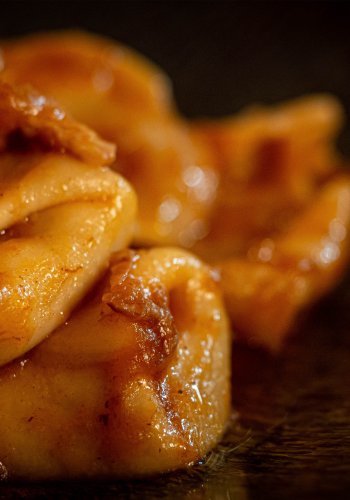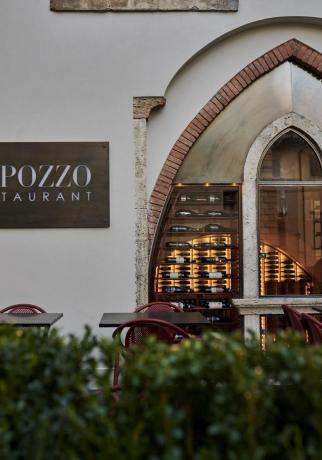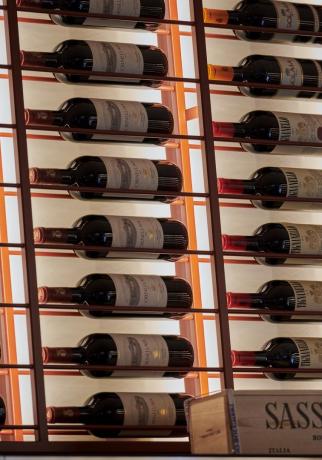
Il Pozzo Montepulciano
Completely renovated and with a new look we are pleased to welcome you! We propose a traditional Tuscan cuisine, trying to blend innovation with typical products; in our dishes you will find the emotions that tell the millenary history of our lands.

We create Culinary Experiences
Specialities
All ingredients are fresh and carefully selected by our chef. Enjoy an amazing dining experience.
COLD MEATS€ 16,00
and Tuscan cheese "pecorini"POACHED EGG€ 18,00
pecorino cheese fondue and truffleGNOCCHI€ 18,00
with pumpkin, pecorino and walnutsSALMON€ 20,00
in almond crustDUCK BREAST€ 24,00
with carrots and orangeCOD CHEESCAKE€ 22,00
with pepper creamTAGLIOLINI PASTA€ 22,00
with friarielli cream, burrata and red prawnFIORENTINA€ 6/HG
Fiorentina Steak
We Are Waiting for You
About Us
2020 for us means restart, union and innovation.
We have brought
together a team of professionals in the culinary arts to try to pay
homage in these moments where the values of Italy are needed more than
ever.
The project was born from the passion of a united group, a
mixture of young energy and veteran wisdom, which always tries to offer
the best in order to create moments and experiences up to high levels
that for many years honours the Italian culture.
Comp...


They say about us
"Uno dei più bei posti più belli in cui sia mai stata. Accolti gentilmente dal cameriere (dopo aver prenotato prima) ci ha condotti al nostro tavolino. Design moderno con menu digitale, piatti di alta qualità proporzionati al prezzo. Una selezione di vini da paura, noi siamo andati sul sicuro, Sassicaia per la nostra magica serata!"
"Nuovo locale gestito da un gruppo di persone gentili ed appassionati del mestiere. Pulizia e servizio ottimi. Cucina a vista, vini strepitosi per tutte le tasche piatti ottimi. Tappa fissa con gli amici a Montepulciano"
"Sono stata in questo ristorante meraviglioso con amici abbiamo mangiato benissimo formaggi molto buoni e particolari carta dei vini molto fornita tagliatelle molto buone e buona scelta di dolci non è a buon mercato ma la qualità è giusto pagarla"
"Sono stato in questo posto per caso in quanto appena aperto e devo dire posto eccezionale, spazi ampi e molto ben arredato abbiamo mangiato nella sala con la cucina a vista ed è stato magico vedere lo chef che ci preparava i piatti, abbiamo mangiato una pappardella inusuale e un'ottimo coniglio, ampia scelta di dolci e sinceramente il Tiramisù era veramente buono e con un'ottima presentazione, torneremo sicuramente"
"sono stato a cena con degli amici il giorno dopo l'inaugurazione, avevo visto il locale durante l'esecuzione dei lavori e devo dire che non ci sono locali cosi' in tutta la provincia ed oltre, il servizio impeccabile, il cibo assolutamente all'altezza del locale e delle aspettative, selezione di vini da urlo, il prezzo giusto e rapportato alla qualita' del cibo e dell'ambiente"
"Locale appena ristrutturato con ottimo gusto, cucina a vista con grande vetrata, ho mangiato i pici e la tagliata veramente buoni, ottima selezione di vini: ci torno sicuramente."
"Situato all' inizio di Montepulciano. ....ristorante carino, personale gentile e disponibile, cibo buono....io lo consiglio sicuramente"
"Al centro di Montepulciano. Personale gentile e disponibile. Prezzi onesti. Consiglio il tagliere di salumi e il mix di crostini. DIVINI! I salumi erano tagliati al momento e stagionati al punto giusto."
"Tutto buonissimo dall'antipasto fino al dolce, il personale è stato molto accogliente è disponibile. Consiglio a tutti di andarci almeno una volta!"
Book a table
Complete the form below, contact us for information regarding activities, availability or to find out how we manage security measures.
Timetable: Lunch 12:00 - 15:30, Dinner 19:00 - 22:00.
Parking available in Via delle Case Nuove - Montepulciano zona, Zone P6.
